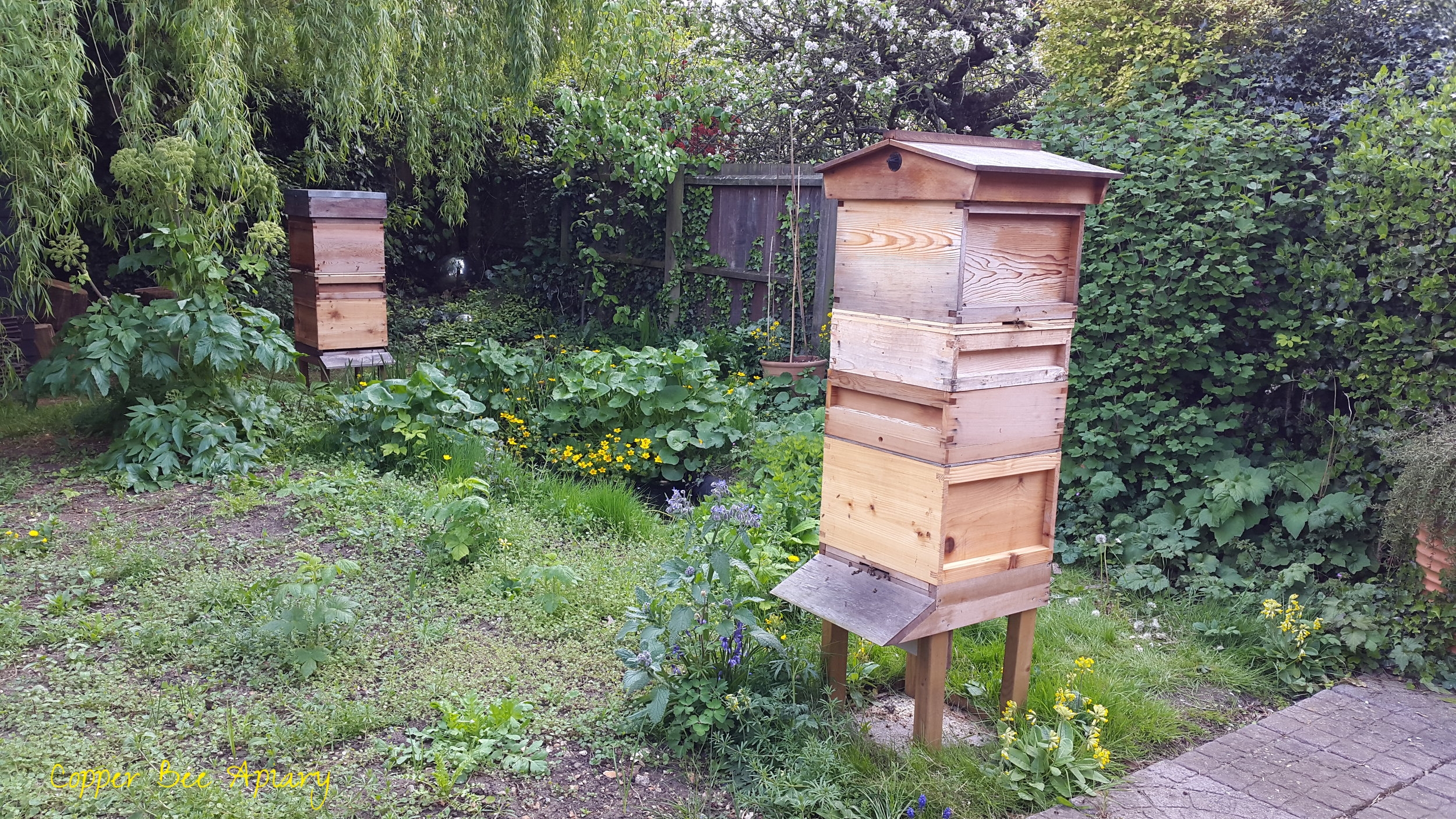Spring Opening of the Cedar Hive
The Cedar Hive was the last of the hives to be opened for its first full inspection of the year. The process of opening all the hives to check on the colonies has been spaced out because I am quite slow at it! I take a long time carefully lifting each frame in and out. Being careful is good of course, but being slow is not. As I get more experienced I should be able to take even better care while being a lot faster.
As I get more experienced I should also notice when the queen is on the queen excluder, and not put it down outside the hive leaving her free to disappear into the long grass. Yes...there is a confession coming up. When I removed the queen excluder from the top of the brood box it had lots of bees on, most of which I shook off over the brood box before glancing over the remaining ones, but it turns out that my glance was a bit too cursory. When I then looked through the brood box, Queen Eve wasn't where I'd hoped to find her. I'd thought she'd be on some frames towards the far end, from which brood had recently hatched - there had been a dusting of white wax cappings underneath that part of the hive - and on which there were now eggs, young larvae and empty cells. I thought she'd just escaped my notice on the frames. But when I picked up the queen excluder to put it back on the brood box, there was a single bee on it - a chestnut brown queen.
Now, I did pause for thought at this point. My main thought was
Goodness me I am a nitwit.
Closely followed by
The other bees from the queen excluder must have gone away and left Her. How glad I am that She stayed there!
But also,
I wonder if this really is Queen Eve?
I hadn't seen Queen Eve before. I wasn't really sure what she looked like. I don't mark my queens (some beekeepers put a spot of paint on their back). This bee was probably Queen Eve, but what if she were an imposter? New queens on mating flights sometimes get lost. Since they so rarely leave the hive, they aren't familiar with the location and surroundings of their home hive. The vicinity of the Cedar Hive was, at that time, filled with clouds of Nasonov pheromone - the honey bee homing signal. That's because I had taken the hive apart and was taking such a long time over it that the bees in the super, being separated from their sisters in the rest of the hive, had set up a tremendous roar and were pointing their bottoms into the air and fanning their wings in the distinctive way that bees do when they emit the pheromone to signal "this is where we are - come here".
So I did wonder whether this chestnut queen might be a new young queen, a pretender to the throne who had arrived on the wing from somewhere else. But, well, what would you do? I put her in the hive, where she quickly ran down into the darkness between the frames. If she wasn't their queen, the bees will have killed her (or so the books say).


